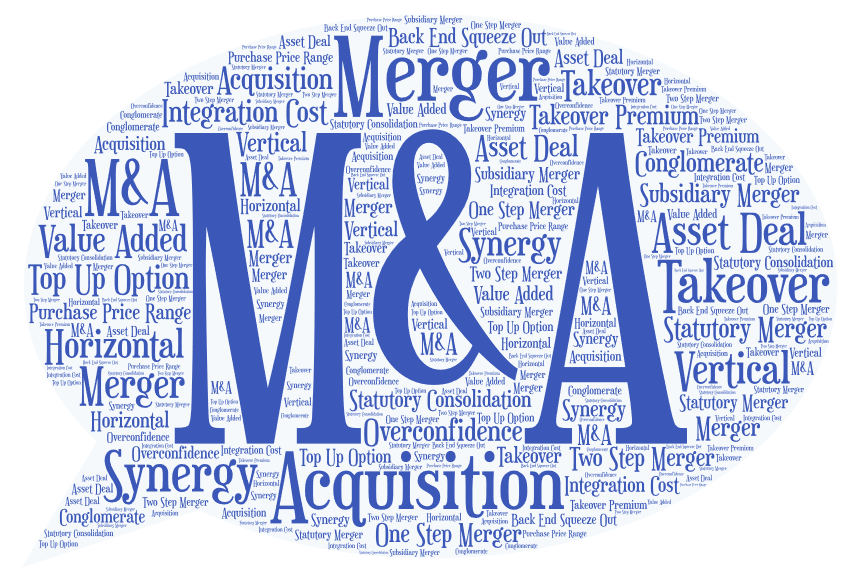Mergers and Acquisitions (M&A)
Section outline
-
Welcome to "Mergers and Acquisitions (M&A)!" The purpose of this module is to discuss some crucial financial issues surrounding takeover decisions. This introductory section motivates the topic and provides an overview of the module structure.
The main learning goals of this module are:
- Know the main forms of takeover and their relevance.
- Understand the basic M&A process.
- Know the key considerations to determine the offer price.
- Use a simple model to understand the ownership and value implications of any deal structure.
- Learn why it is difficult to create value with M&A.
Activities: 3 -
This section focuses on the various types of mergers and acquisitions:
- First, we discuss the basic forms of takeover, including asset acquisitions, statutory consolidations, and mergers.
- Then we discuss how a company can actually gain control over another company using so-called one step or two step mergers.
- Finally, we look at mergers from an economic perspective and briefly discuss the key characteristics of horizontal, vertical, and conglomerate mergers.
Activities: 3 -
In this section, we walk step-by-step through the typical merger process that brings us from the basic business plan of the acquiring company to the evaluation of an executed M&A transaction. Importantly, we discuss:
- The major steps during the pre-purchase decision activities;
- The iterative process of the negotiation phase;
- The relevance of the post-purchase decision activities.
Activities: 2 -
Now that we understand the basics of the M&A process, the logical next step is to think about the actual transaction price of a deal and what valuation steps are necessary to come up with a reasonable and sustainable offer price. The logical sequence is fairly simple:
- Determine the current value of the involved firms (Stand-alone value)
- Think about how the management of the target company could be improved (Control premium)
- Try to quantify the benefits and costs that are associated with the transaction in question (Net synergy)
Activities: 3 -
Now we are ready to discuss the key steps involved in the decision about the initial offer price. Put simple, the questions we need to answer are:
- What to buy? The assets or the equity of the firm?
- How much to pay? Put differently, which fraction of the expected net synergies shall be shared with the target company?
- How to pay? What should be the composition of the offer price? All cash? All stock? Or a mixture between cash and stock?
In this context, we learn about the relevance of the synergies (net of integration costs) that are associated with the deal in question as well as the key factors that determine who will earn the financial benefits that are associated with these synergies.Activities: 3 -
This section presents a simple model that allows us to better understand the relevance of the deal structure (in particular, how much and how to pay) for the actual value of a deal.
We also discuss how this deal structure determines the allocation of value, ownership, and risk among the deal parties, and how it helps us to predict the stock-market reaction to the announcement of an M&A transaction.
Finally, we apply this simple model to a recent M&A transaction in the software sector to see how to interpret the actual stock market reaction to a deal announcement.
Activities: 5 -
Given the economic importance of M&A transactions, this section asks whether M&A actually pays, on average. We start out with a brief overview of the academic literature that seems to show that M&A transactions, on average, lead to a small positive value creation.
Then we discuss the key challenges surrounding valuable M&A decisions: We show that managers often overestimate the synergies that are associated with a deal while they underestimate the merger integration costs. These two factors are potentially toxic for the acquiring firm.
We conclude by presenting a rule-of-thumb according to which the synergies from a deal have to amount to at least 50% of the target's stand-alone valuation for the transaction to make financial sense for the acquirer.
Activities: 3
